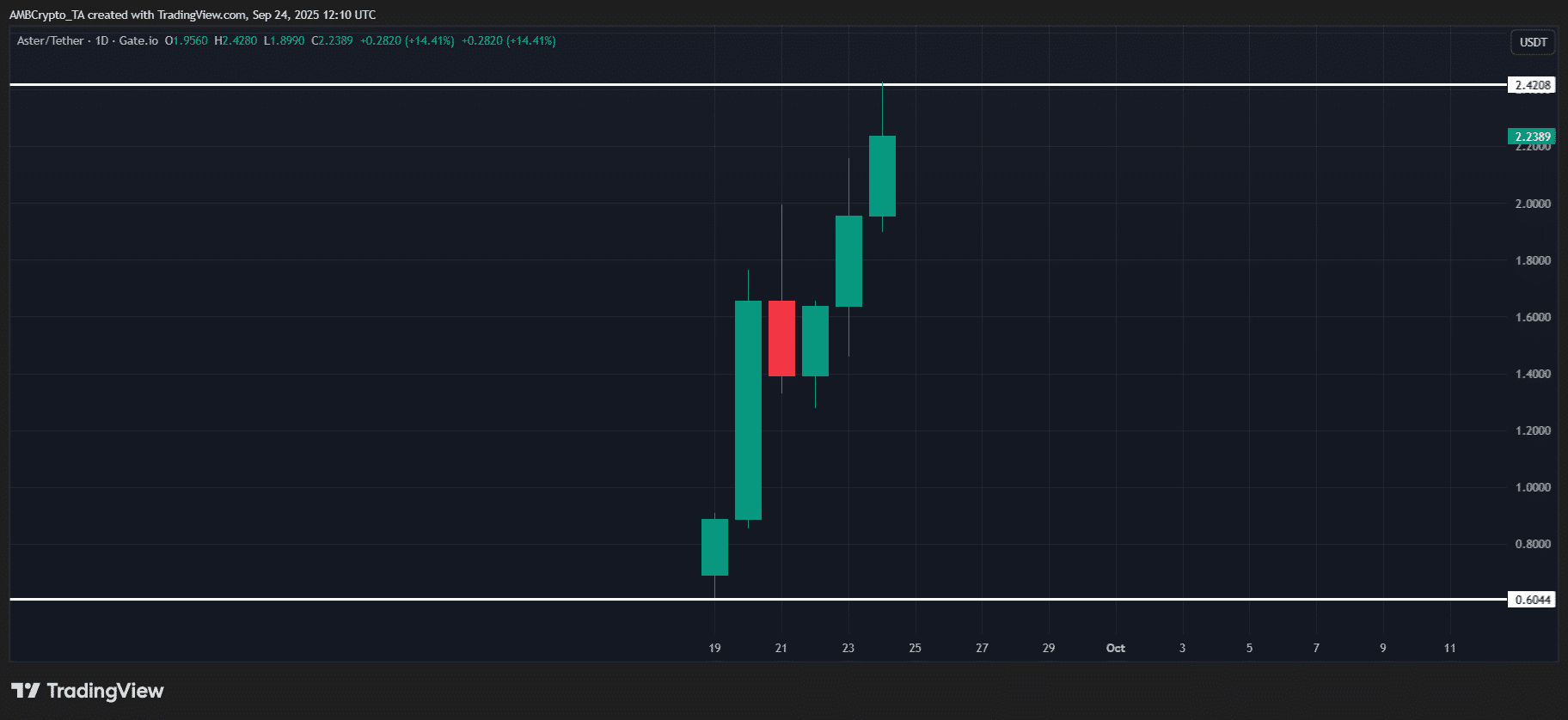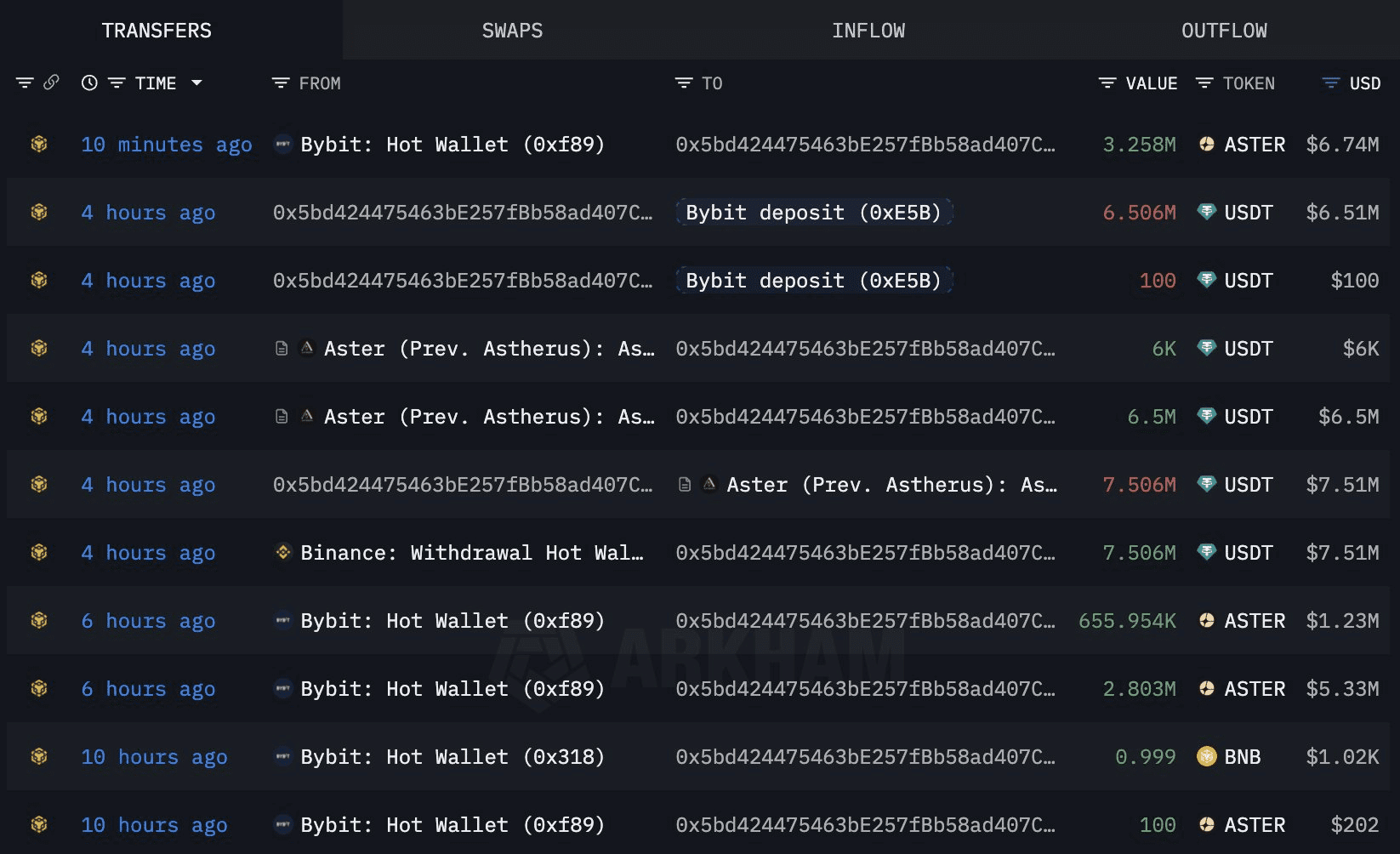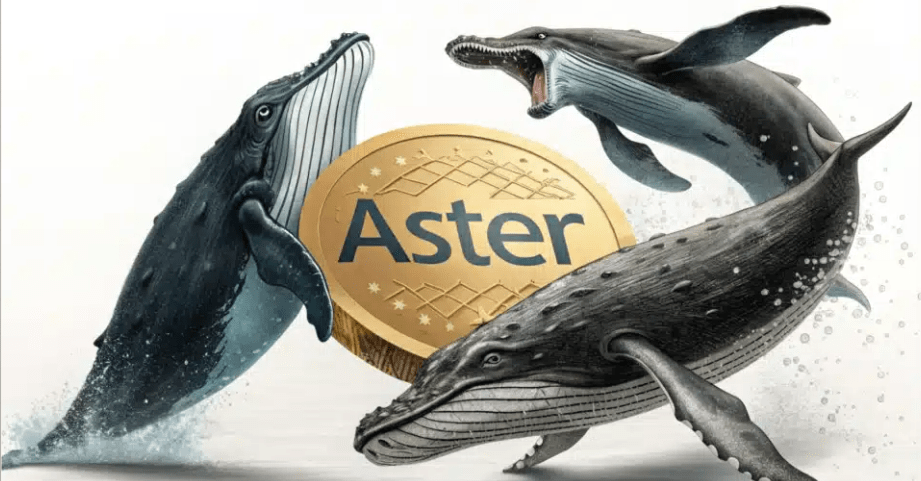Recently, the performance of the DEX token ASTER has been explosive! Within a week, it has almost dominated the涨幅榜, with a 24-hour increase of 30%, and has skyrocketed by 2,587% since its launch.
Don't just look at the price increase, on-chain data also shows strong momentum: the number of holders jumped by 7.3%, reaching 61,450 people, indicating that new capital is continuously pouring in. Even though there were concerns about manipulation in the early stages, enthusiasm remains high now.

Why is ASTER's short-term momentum so strong?
The answer lies in several key factors:
Strong FOMO (Fear of Missing Out) mentality - market sentiment drives more people to enter;
Tight supply—96% of the tokens are concentrated in the hands of a few whales, creating a significant scarcity effect;
The number of HODLers is increasing—long-term holders are continuously joining, providing stability to the market;
Perp flow is active—funds in perpetual contracts are concentrated, short-term volatility is manageable but the opportunities are immense.
These factors combined have made #ASTER🚀 not only hot in price but also consistently rising in on-chain activity. It's worth noting that the resistance level at $2 has been successfully transformed into a springboard, providing a foundation for the next wave of increases.
How do whales play with panic?
The market experienced volatility because six whale wallets controlled 96% of the supply, causing the price to drop nearly 16% from the peak of $2, liquidating many perpetual positions. It seemed like panic, but savvy whales had already been buying on the dips.
For example, Lookonchain tracked a new whale buying 6.72 million ASTER at a cost of $2.08, and within less than 24 hours, this position had an unrealized profit of $1.09 million!

From the 11 major on-chain actions, 4 were buying operations, indicating that whales are accumulating at the market top while maintaining FOMO sentiment, enticing ordinary investors to join this feast.
Short-term opportunities and long-term risks
In the short term, if this trend continues, it could be a clean entry opportunity for ordinary investors. On-chain supply is tight, the number of holders is increasing, and perpetual contract flow is concentrated; all of these are driving prices higher.
However, long-term risks also exist. Due to the large number of whales and extremely concentrated supply, a massive sell-off could trigger liquidations worth millions or even billions of dollars and cause severe price fluctuations. Therefore, positions need careful monitoring, and one must avoid blindly chasing highs.

Summary
In summary: ASTER whales are textbook examples of playing 'buying fear', turning market panic into profits. In the short term, prices are continuously rising, and on-chain activity is increasing, making it a good time to observe and participate; long-term, one must be wary of the potential risks from whale concentration.
Investing in ASTER requires monitoring on-chain trends and understanding risk management—capitalize on short-term momentum, seize opportunities, but don’t forget to keep a close eye on your positions.


